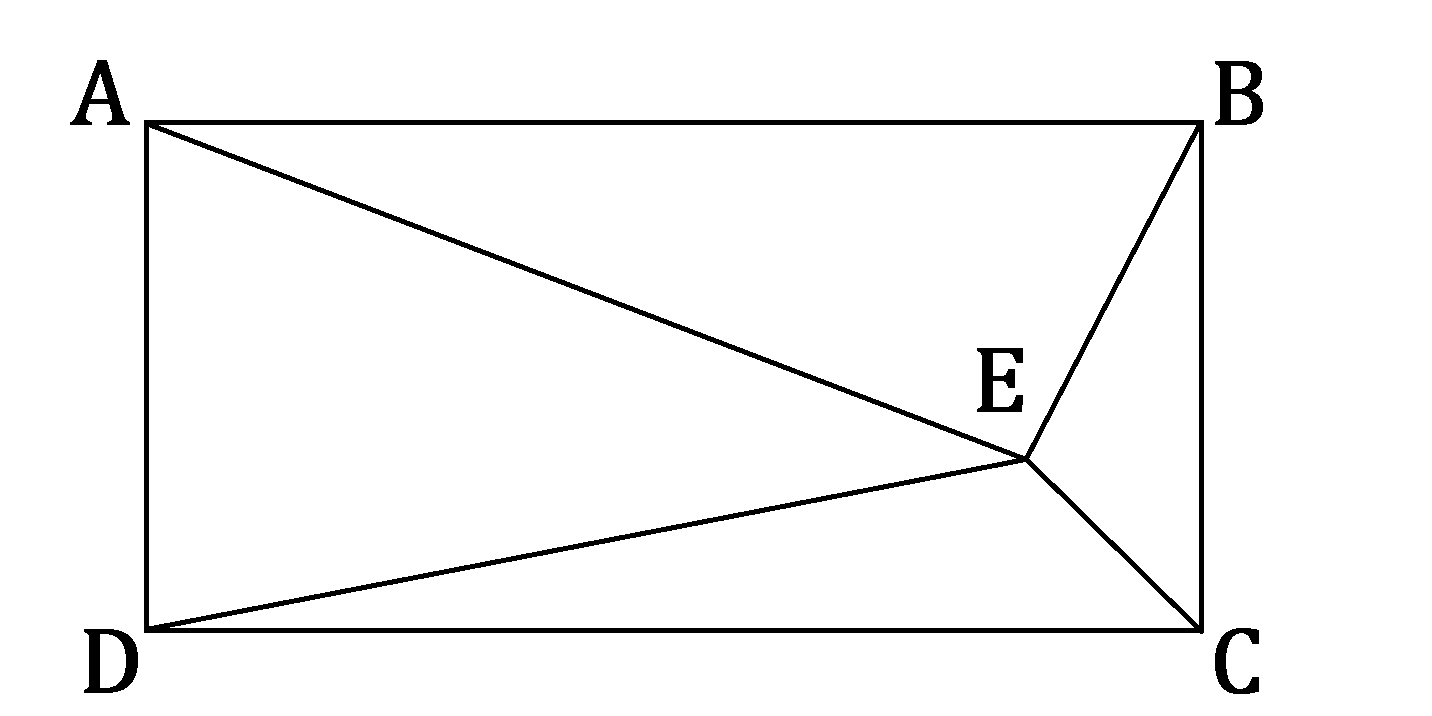Mystery Spot
Point lies within rectangle as shown below.
If the distances from the vertices to point are all distinct integers, what is the least possible value of

The answer is 20.
This section requires Javascript.
You are seeing this because something didn't load right. We suggest you, (a) try
refreshing the page, (b) enabling javascript if it is disabled on your browser and,
finally, (c)
loading the
non-javascript version of this page
. We're sorry about the hassle.
Relevant wiki: British Flag Theorem
According to the British Flag Theorem , if E is a point within the rectangle A B C D , then A E 2 + C E 2 = B E 2 + D E 2 .
Let n = A E 2 + C E 2 = B E 2 + D E 2 for some integer n . We will then attempt to find the least possible natural number n that can be written as the sum of two squares in two different ways.
Then for some integers a and b , a 2 + b 2 = ( a + b i ) ( a − b i ) , which is the product of Gaussian integers or ∣ z ∣ 2 , and when plotting the Gaussian integers z over the complex plane, we can draw a Gaussian circle of radius ∣ z ∣ as the following examples:
The number of lattice points of z on the circumference will then equal to the number of sums of squares for some natural number n = ∣ z ∣ 2 .
According to Sum of 2 Squares theorem, n can be written as the sum of two squares if & only if n only has prime factors p = 4 m + 1 for some integer m .
Now when expressing n as prime factorization, n = 2 a 0 ⋅ p 1 a 1 ⋯ p i a i ⋅ q 1 b 1 ⋯ q j b j , where p is a prime factor in a form of 4 m + 3 and q is a prime factor in a form of 4 m + 1 .
If any p has any odd number, the remainder will be 3 in modulus 4 , making the sum of squares impossible.
On the other hand, considering the powers of q , the combination for each q can be chosen from 0 to b j . The overall combination B = ( b 1 + 1 ) ( b 2 + 1 ) ⋯ ( b j + 1 ) .
Considering only positive signs over the first quadrant in the complex plane, the number of sum of squares will then equal to 2 B as reflection over the line real part = imaginary part.
Altogether, the function for number of sums of squares, r 2 ′ ( n ) can be formulated as:
r 2 ′ ( n ) = ⎩ ⎪ ⎪ ⎪ ⎨ ⎪ ⎪ ⎪ ⎧ 0 2 B 2 B − ( − 1 ) a 0 if a i is odd if a i is even and B is even if a i is even and B is odd
Hence, our desired r n ′ = 2 . For the second scenario, where B is even, B = 4 . In this case, B = ( 1 + 1 ) ( 1 + 1 ) or B = 3 + 1 . In other words, the number n can be the product of two different primes or the cube of one prime.
For prime q = 4 m + 1 , the list involves: {5, 13, 17, ...}.
For lowest value possible, then n = 5 ⋅ 1 3 = 6 5 while n = 5 3 = 1 2 5 , which is not the least number.
Now for the third scenario, where B is odd, B − ( − 1 ) a 0 = 4 . Thus, B = 3 = 2 + 1 and a 0 = 1 . Then n = 2 q 2 , and the least value would be n = 2 ⋅ 5 2 = 5 0 .
Finally, from both scenarios, we can show that these numbers can really be written as two sums of two squares:
5 0 = 1 2 + 7 2 = 5 2 + 5 2
6 5 = 1 2 + 8 2 = 4 2 + 7 2
However, since the question specifically asks for different lengths within the rectangle, the only sum of the least possible four lengths = 1 + 8 + 4 + 7 = 2 0 .